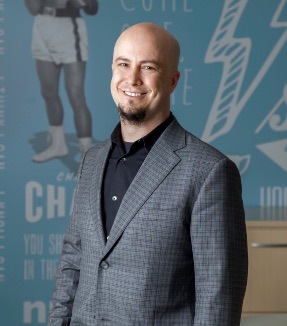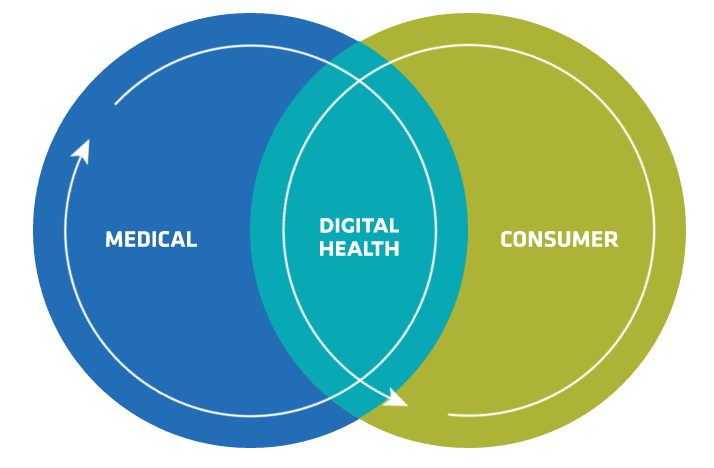
Editor’s Note: Brian Garcia is the SVP, Chief Technology Officer and Product Officer at Welltok, developers of the CaféWell Health Optimization Platform that guides and incentivizes consumers. Garcia most recently served as the chief technology officer for Healthagen, a subsidiary of Aetna, where he led technology strategy across multiple business units in both growth and start-up phases.
Designing a product is a complicated undertaking. Designing a product for the healthcare industry, which is known for its complexity and layers of regulation, can be downright daunting. Especially when we are seeking to drive human behavior change like tobacco cessation, or even a basic action such as getting a flu shot. We are all different, with unique interests, motivations and environmental factors that affect the healthcare choices we make every day. Health IT needs to take that into consideration, but how? The answer: Human-centered design.

Human-centered design prioritizes empathy for the end-user. In other words, we have to understand what drives an individual’s behavior: What motivates him? What’s most important to her?, etc. The goal is no longer usability; it’s desirability. Technology is the enabler, but design is the engager.
In order to achieve engaging, human-centered consumer design, design teams or vendors should follow these five best practices:
1. “Design”:It’s more than just making it look pretty.
The first step to creating an engaging design is to expand your understanding of what “design” is. Design isn’t purely aesthetic, it’s how users navigate and experience the solution. As we move through the design process, we must ask ourselves how we’re equipping consumers to accomplish their goals and objectives. This also involves doing some background research and working with partners to ensure we understand how different types of people will want to utilize the solution.
2. Lead with real people.
In order to truly understand how consumers will use and react to the solution design, we have to talk to them. Invite real people to share their experiences so leadership and design teams can not only appreciate their experience, but can also pivot if necessary. Through conversation, we can empathize with the end-user and then make changes to the solution to create a more engaging design. These discussions serve as both inspiration and a reality check.
3. Use a well-proven design process.
Every organization has some sort of design process. For example, Welltok follows a formalized five-step process of creating a design strategy, focusing the design through additional research, executing the detailed design plan, making tweaks based on feedback and then conducting field tests to make sure we hit the mark. At each point in the design process, the team has a different objective and must use different skills to reach it.
Therefore, each member of the team must be aware of the process and know which step they’re on at any given point. This will eliminate confusion and reduce frustration experienced by the design team. The whole team must understand that design is an iterative learning process. The more that the team learns, more cycles of the process can be completed, meaning that ideas and solutions are being further and further refined.
4. Involve design teams from the start of the product development process.
Oftentimes, the design team is not invited to internal product meetings until the end of the process. This is a sure-fire way to end up with a pretty solution, but not a useful one. If the product is too far down the development path, there is little design teams can do to influence the outcome. The design effort must be a key component from the start of the process to ensure a truly useful solution is being built, not just an aesthetically pleasing one.
5. One size does not fit all.
We’ve established that empathy is important, but who we’re empathizing with is equally as critical. If we only take into account one particular user type or subset of the population, we’re missing the opportunity to engage huge swaths of other users. We have to take into account all of the different ways people may use the solution, as well as why they are or aren’t using it. We can’t just segment people out by demographics, gender or healthcare condition (i.e. diabetic, hypertension), because within those segments exist a myriad of opinions and differences.
Useful ways to further segment include consumer preferences, motivations, interests and health goals. The more we can accommodate different types of people, personalizing the solution based on these many possibilities, the better chance we have to truly offer an engaging experience – and the more valuable the solution will become to the consumer.
It’s time for healthcare to say goodbye to the technology-first approach and start solving for the needs of real people. By designing for the needs and behaviors of users, we’ll take a critical step of bringing the user into the foreground and fading technology into the background. Technology is still a critical piece of the puzzle, and adding on thoughtfully designed interactions allows us to achieve the ultimate goal of engaging consumers.
Opinions expressed by HIT Consultant Contributors are their own.

